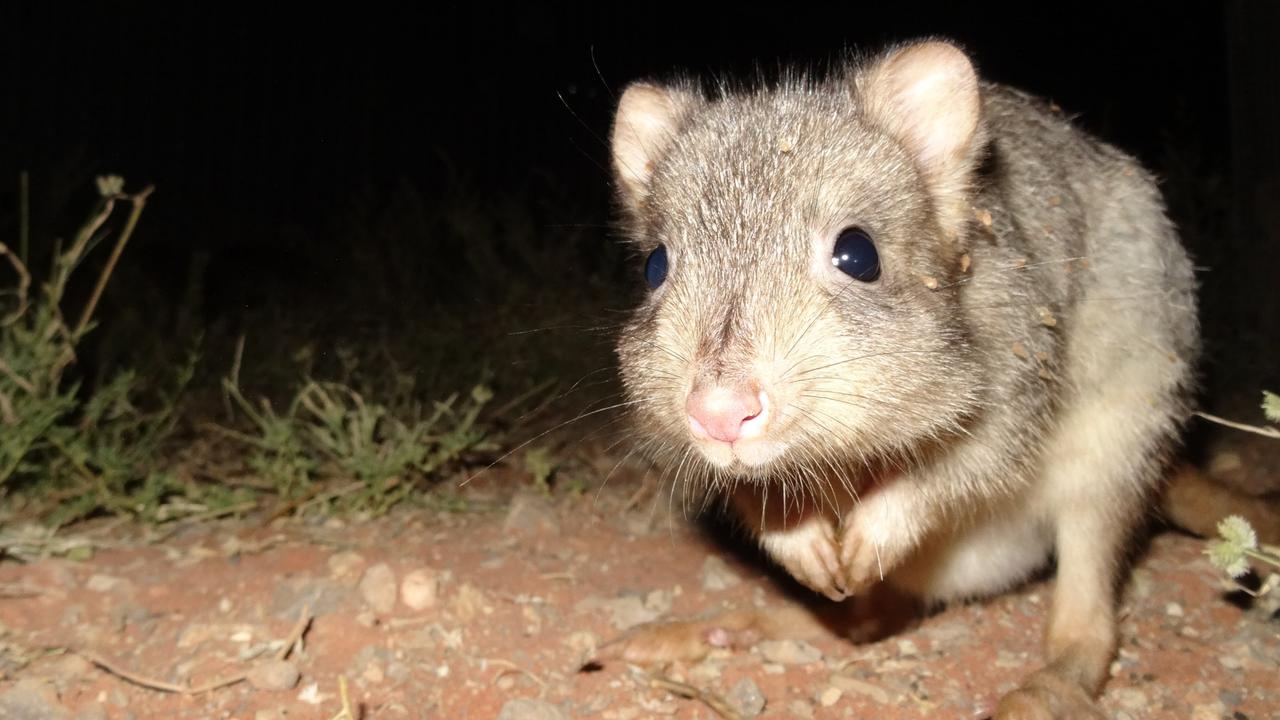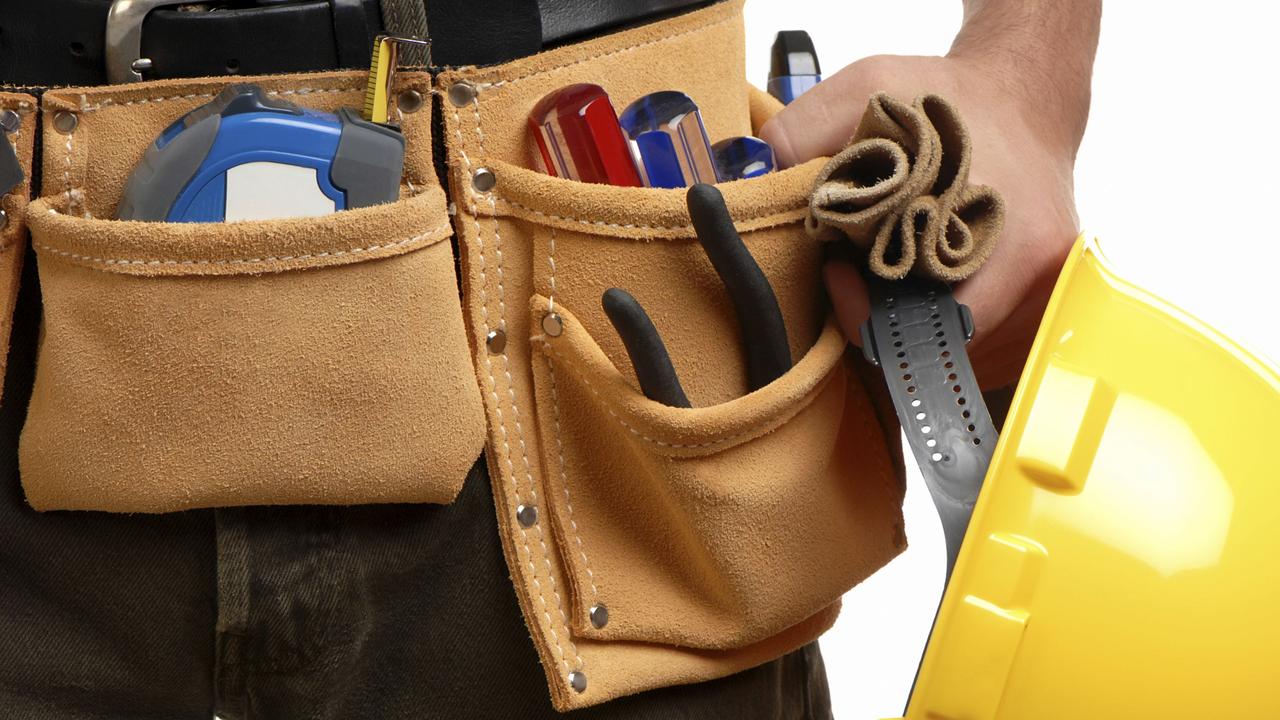BAE Systems scores $35 billion Future Frigates contract
THOUSANDS of South Australian jobs at the state’s shipyards will be secure for decades as BAE Systems builds nine of Australia’s next-generation frigates.
SA News
Don't miss out on the headlines from SA News. Followed categories will be added to My News.
READ BELOW: Analysis: ASC’s sigh of relief
READ BELOW: Who is BAE Systems?
- Inquiry finds naval shipbuilding riddled with blow outs
THOUSANDS of South Australian jobs at the state’s shipyards will be secure for decades as BAE Systems builds nine of Australia’s next-generation frigates.
Prime Minister Malcolm Turnbull will be in Adelaide today to announce the $35 billion Future Frigate project has been awarded to BAE, after two years of deliberations.
In a shock move, Government-owned ASC Shipbuilding will become a subsidiary of the UK defence giant during the build, heading off concerns a foreign builder could strip Australia of its defence capabilities when the last ship is complete.
It will be music to the ears of ASC’s local workforce.
The Commonwealth will retain veto rights over major decisions and the company is expected to return fully to Government hands in 2042.
Defence sources have already labelled the Future Frigates, named the Hunter class, the “sub hunter” in a nod to the ships’ high-level capabilities.
The winning bid, signed off late yesterday by Cabinet’s National Security Committee, will create about 4000 Australian jobs, including 1500 at ASC in Osborne.
“This $35 billion program will create 4000 Australian jobs right around the country and create unprecedented local and global opportunities for businesses large and small,” Mr Turnbull said.
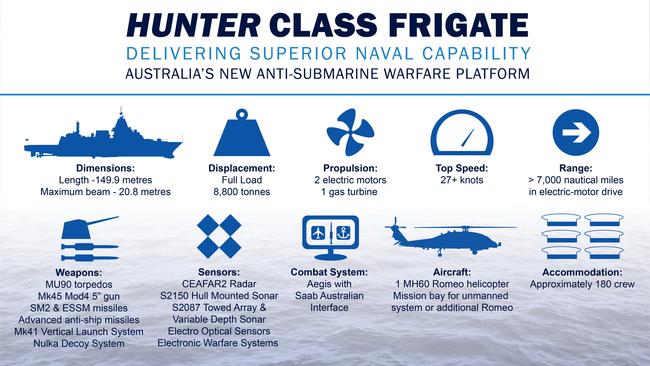
“BAE has prequalified over 500 Australian businesses (including 100 in SA) from every state and territory to be in the Hunter class supply chain.”
Mr Turnbull declared the Hunter class frigates handed the country’s defence force the “highest levels of lethality and deterrence” and would ensure Australia’s military had the “potent naval capability it needs”.
“The Hunter class will be one of the most capable warships in the world,” he said.
“The Hunter class will have the capability to conduct a variety of missions independently, or as part of a task group, with sufficient range and endurance to operate effectively throughout the region.
“The frigates will also have the flexibility to support non-warfare roles such as humanitarian assistance and disaster relief.”
BAE had been the favourite to secure the contract over Fincantieri and Navantia — which had also been short-listed — because the bid was considered to be the top of the line.
The Hunter class will begin entering service in the late 2020s, replacing the eight Anzac Frigates, which have been in service since 1996.
Premier Steven Marshall said the formalisation of the deal meant that SA is “unquestionably the centre of naval shipbuilding in the country”.
“My government is committed to working with the Coalition Government and BAE to maximise the local benefits of this huge investment for SA,” he said.
OFF THE RECORD: THE SA POLITICS PODCAST
“The Future Frigate project is poised to deliver 1500 direct local jobs, in addition to the 600 jobs needed for the redevelopment of the Osborne South shipyards and opportunities through the supply chain.”
Mr Marshall said there were “some significant challenges” in ensuring SA has the skilled workforce to deliver the project, which validated the Government’s election pledge to create 20,000 additional apprentice and traineeship positions.
Opposition Leader Peter Malinauskas said the announcement was “great news for our state”.
“The Turnbull Liberal Government must now outline how they will ensure promised jobs are delivered,” he said.
“It is also important for the Marshall Liberal Government to continue to fight to maximise the number of jobs here in South Australia.”
Port Adelaide Mayor Gary Johanson said people would be “dancing in the streets” in Port Adelaide.
“This is the news we’ve been waiting for, for forever really,” he said.
“The Port has really been in limbo since the end of containerisation and it needed a key economic driver, and this is it.
“This will ensure that not only this generation but future generations will have the opportunity to live, work and play in the Port.”
Mr Johanson gave credit to Defence Industry Minister Christopher Pyne’s advocacy for the frigates to be built in SA. But he said ensuring the state got its fair share of economic opportunities would be harder now SA’s dwindling population saw its number of federal MPs declining.
Mr Pyne said that, as a South Australian, he was “excited” that BAE would be building the nine ships in the state.
He said the surprise deal to have BAE run ASC Shipbuilding would ensure the work would be carried out by Australian workers and would build the country’s sovereign defence industry.
Centre Alliance Senator Rex Patrick said ASC’s involvement in the deal was a “great result” for the shipbuilding program’s sovereignty.
But Senator Patrick said he remained somewhat concerned about the “relatively immature design” of BAE’s Hunter class frigate, as well as maximising local industry content.
“That adds to the risk profile of this project which will need to be carefully managed,” he said.
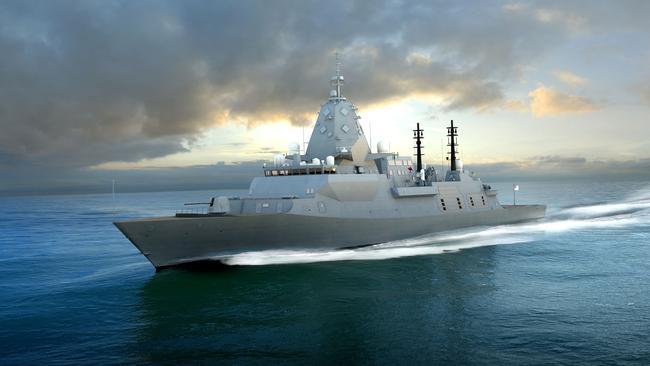
“At the end of the program the Commonwealth will resume complete ownership of ASC Shipbuilding, thereby ensuring the retention in Australia of intellectual property, a highly skilled workforce and the associated equipment,” Mr Pyne said.
“We have always wanted to use the skills and capabilities at ASC for the Future Frigates project because they have done a terrific job with the Air Warfare Destroyers and (Collins class) submarines. This achieves this and more.” In recent weeks Centre Alliance and Labor had attacked the Government over the short-listed bidders, both calling for the frigates to be built by a truly Australian company.
Mr Pyne said the deal should “allay” those concerns because the Federal Government would retain a sovereign share in ASC Shipbuilding, while BAE managed the program.
“Our intention was always to have a sovereign shipbuilding industry and that’s what we’ve been able to achieve,” he said.
Business SA chief executive Nigel McBride said the project would give businesses the confidence to invest in South Australia for decades.
“The challenge as SA companies and employers is that everyone who wants to be involved here starts to align with what you need to do to be in the supply chain,” he said,
“It continues to put us on the map globally as a shipbuilding leader.”
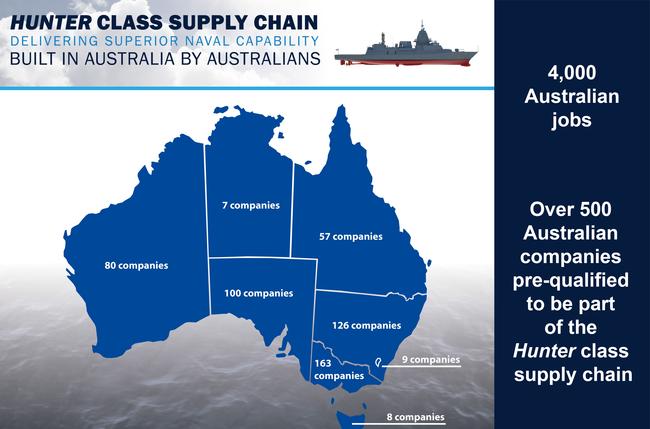
He said BAE expected the Australian industry content for the Hunter class build would be between 65 to 70 per cent, creating and securing thousands of local jobs for decades.
Defence Minister Marise Payne said the Future Frigates project, the final plank of the Government’s shipbuilding program, was one of Australia’s most significant investments in military capability.
Senator Payne, who thanked all the companies for their involvement, said the Hunter class would incorporate the leading edge Australian-developed CEA Phased-Array Radar and the US Navy’s Aegis combat management system with an Australian interface developed by Saab Australia.
The frigates will be loaded with MU90 torpedo, advanced anti-ship missiles and Nulka decoy system.
Adelaide’s ship shape future
Now:
AIR WARFARE DESTROYERS
■ By the end of 2019, the Osborne-based Air Warfare Destroyer Alliance is scheduled to have completed the third of three Hobart-class Guided Missile Destroyers.
■ The AWD Alliance includes Defence, ASC and Raytheon Australia. Navantia, the US Navy and Lockheed Martin are also involved.
■ Workforce: At its peak in 2015, about 2500 people were directly employed on the project, but jobs are now being shed.
■ Estimated lifetime cost: In excess of $9 billion.
Next year:
OFFSHORE PATROL VESSELS
■ Construction of two 1700-tonne Offshore Patrol Vessels is scheduled to begin at Osborne later this year.
■ The final 10 OPVs will be built in Western Australia from 2020 to enable workers at Osborne to concentrate on the Future Frigates project. ASC has been subcontracted by German shipbuilder Lürssen to build the first two vessels at Osborne in Adelaide.
■ Jobs: 1000 Australian workers — 400 direct and a further 600 in the supply chain.
■ Estimated lifetime cost: About
$4 billion.
2020:
FUTURE FRIGATES
■ Construction of nine frigates, optimised for anti-submarine warfare, is scheduled to begin in Adelaide from 2020. The first frigate would come into service in the late 2020s, replacing the eight Anzac Frigates which have been in service since 1996.
■ BAE Systems, Fincantieri and Navantia were short-listed for the project, with BAE named today as the winning tenderer to build the ships at ASC at Osborne.
■ Jobs: About 4000 Australian jobs and up to 5000 more from companies across the country in the supply chain.
■ Estimated lifetime cost: $35 billion.
2022-23:
FUTURE SUBMARINES (left)
■ France’s Naval Group won the contract to deliver 12 submarines.
■ Construction is likely to start in Adelaide in 2022 or 2023, with the first submarine to enter services in
the 2030s.
■ Construction will extend into the late 2040s, with the last of the 12 submarines likely to enter service in the early 2050s.
■ Jobs: Estimated 2800 direct jobs, including 1700 in Adelaide and thousands more in the supply chain.
■ Estimated lifetime cost: About $50 billion.
Analysis: ASC’s sigh of relief
FUTURISTIC submarine-hunting warships built in South Australia by South Australians will hit the water in the 2020s.
A far more immediate concern in SA has been — and is — the jobs associated with the $35 billion Future Frigates program.
The local industry was left reeling after it was revealed the huge tender included a couple of tiny lines that made it very clear Australian shipbuilders did not have to be used. It explicitly mentioned that there was no obligation to involve ASC.
In the ensuing scramble, the tenderers all swore they would use the ASC workforce — indeed the emerging problem is that there will not be enough
workers for the naval shipbuilding enterprise.
Despite that reassurance, though, ASC was still letting workers go. So today’s announcement that ASC Shipbuilding (which has been split off from the submarine operations) will build the frigates will soothe some anxieties. As will tender winner BAE Systems’ expectation that the Australian Industry Content on the ships will be up to 70 per cent.
We don’t know all the details of the deal yet, but we do know the effects will last long after those warships start hunting.
— Tory Shepherd
Who is BAE Systems?
FUTURISTIC submarine-hunting warships built in South Australia by South Australians will hit the water in the 2020s.
A far more immediate concern in SA has been — and is — the jobs associated with the $35 billion Future Frigates program.
The local industry was left reeling after it was revealed the huge tender included a couple of tiny lines that made it very clear Australian shipbuilders did not have to be used. It explicitly mentioned that there was no obligation to involve ASC.
In the ensuing scramble, the tenderers all swore they would use the ASC workforce — indeed the emerging problem is that there will not be enough
workers for the naval shipbuilding enterprise.
Despite that reassurance, though, ASC was still letting workers go. So today’s announcement that ASC Shipbuilding (which has been split off from the submarine operations) will build the frigates will soothe some anxieties. As will tender winner BAE Systems’ expectation that the Australian Industry Content on the ships will be up to 70 per cent.
We don’t know all the details of the deal yet, but we do know the effects will last long after those warships start hunting.

